Definition
Osteomalacia means soft bones. Bone is a living, active tissue that’s continually being removed and replaced. This process is known as bone turnover. Bone consists of a hard outer shell (the cortex) made up of minerals, mainly calcium and phosphorus, and a softer inner mesh (the matrix) made up of collagen fibres.
Structure of bone
When normal bone is formed, these fibres are coated with mineral. This process is called mineralisation. The strength of the new bone depends on the amount of mineral covering the collagen matrix. The more mineral laid down, the stronger the bone.
Osteomalacia happens if mineralisation doesn’t take place properly. In osteomalacia more and more bone is made up of collagen matrix without a mineral covering, so the bones become soft. These softened bones may bend and crack, and this can be very painful.
There are rarer types of osteomalacia. These are usually due to problems in the kidneys which result in loss of phosphorous from the body. This is sometimes inherited and passed from parents to their children in their genes, but can also happen with other kidney problems and occasionally as a side effect of treatment with some drugs.
Epidemiology
In the US and Europe, more than 40% of the adult population older than age 50 years are vitamin D deficient, this being the most prominent cause of osteomalacia. In developing countries, such as Tibet and Mongolia, vitamin D deficiency leading to clinical rickets is reported in 60% of infants. In the Middle East, a high prevalence of rickets and osteomalacia has been described in Muslim women and their infants, perhaps due to increased clothing coverage of the skin.
Fortification of foods with vitamin D and the use of vitamin supplements have greatly reduced the incidence of osteomalacia in the Western world. Despite this, vitamin D-related osteomalacia still occurs with the consumption of unfortified foods, especially in the setting of limited sunlight exposure.
History behind Osteomalacia
- In 1916, German medical research pediatrician and scientist, Kurt Huldschinsky, discovered, Osteomalacia.
- He discovered that some patients have a low intake of vitamin D, and exposing them to an ultra- violet light or the sun light works as a recovery method, also supplementing dairy products in their diet will too.
Causes of Osteomalacia
A lack of the proper amount of calcium leads to weak and soft bones.
Vitamin D is absorbed from food or produced by the skin when exposed to sunlight. Lack of vitamin D produced by the skin may occur in people who:
- Live in climates with little exposure to sunlight
- Must stay indoors
- Work indoors during the daylight hours
- Wear clothes that cover most of their skin
- Have dark skin pigmentation
- Use very strong sunscreen
You may not get enough vitamin D from your diet if you:
- Are lactose intolerant (have trouble digesting milk products)
- Do not eat or drink milk products (more common in older adults)
- Follow a vegetarian diet
- Are not able to absorb vitamin D well in the intestines, such as after gastric bypass surgery
Other conditions that may cause osteomalacia include:
- Cancer
- Kidney failure and acidosis
- Lack of enough phosphates in the diet
- Liver disease, and therefore cannot convert vitamin D to its active form
- Side effects of medicines used to treat seizures
Phosphorus deficiency:
Occasionally, osteomalacia can be due to a lack of phosphorus in your body. This can be caused by taking certain antacid tablets (such as aluminium hydroxide, Alu-Cap) over a long period of time, kidney disease or a rare inherited disease called hypophosphataemic rickets.
Risk Factors of Osteomalacia
- Hereditary vitamin D metabolism disorders
- Kidney failure
- Mineral deficiency
- Cancer
- Liver disease
What Are the Symptoms of Osteomalacia?
The symptoms of osteomalacia include the following.
- Bones that fracture very easily are the most common symptom.
- Another symptom is muscle weakness. This happens because of problems at the location where the muscle attaches to bone. You may have a hard time walking and may develop a waddling gait.
- Bone pain, especially in your hips, is also a very common symptom. This dull, aching pain can spread from your hips to your lower back, pelvis, legs, and even your ribs.
If you also have very low levels of calcium in your blood, you may have:
- Irregular heart rhythms
- Numbness around your mouth
- Numbness in your arms and legs
- Spasms in your hands and feet
What are the potential complications of osteomalacia?
- Easily fracturing bones
- Muscle weakness
- Stiffness and difficulty walking.
- All these symptoms, including others, can return if sufficient vitamin D and other minerals are not adequate.
- If you have other underlying health conditions like liver disease or kidney disease it may also lead to further bone loss to inhibited vitamin D and nutrient absorption.
How is Osteomalacia Diagnosed?
Osteomalacia can be diagnosed by:
- X-Ray – Slight cracks in your bones that are visible on X-rays are characteristic of osteomalacia.
- Blood Tests – These tests will measure low levels of calcium, phosphorus, electrolytes and vitamin D in your system. A blood test can also be measured for alkaline phosphatase isoenzymes and parathyroid hormone levels. High levels of these indicate osteomalacia. Another blood test can check your levels of parathyroid hormone. High levels of this hormone suggest insufficient vitamin D and other related problems.
- Bone Biopsy. This is a test where a small sample of your bone is removed. Although accurate, it’s rarely needed to make the diagnosis for osteomalacia.
Treatment used for Osteomalacia
- Treatment will cure osteomalacia in most cases, but easing bone pain and muscle weakness may take several months.
- If the disease is caused by a lack of vitamin D, daily doses of 20–50μg/800- 2,000 units vitamin D are often used, but some doctors may give larger doses to start off with.
- Calcium supplements of 500–1,000 milligrams (mg) a day may speed up bone healing if your calcium intake from your normal diet is below 750 mg a day.
Medications
- Alfacalcidol: It is a vitamin D tablet can be used for both adults and children to treat osteomalacia and rickets.
- Ergocalciferol: It is a form of Vitamin D, which is synthetic oral calcium regulator. It is a white, colorless crystal which is soluble in organic solvents and in vegetable oils but is insoluble in water.
Self-help and daily living
There are many things people can do to promote healthy bones. These include:
- Having a diet rich in vitamin D
- Getting a healthy amount of sunshine
- Reducing alcohol intake
- Stopping smoking
- Exercising regularly
- Maintaining a healthy weight.
Exercise
- Exercise helps to strengthen the bones, especially weight-bearing exercise (anything that involves walking, running or lifting weights).
- However, you should avoid intensive exercise while any fractures or cracks in the bones are healing
Prevention of Osteomalacia
There are several measures you can take to prevent osteomalacia.
Diet
Eat plenty of foods rich in calcium and vitamin D. Good sources of calcium include:
- dairy products (eg milk, yoghurt and cheese) bread made with fortified flour beans and pulses (eg kidney beans and lentils) dried fruits green vegetables (eg broccoli and cabbage)
- Not many foods contain enough vitamin D to give you your daily requirement, the main source is sunlight. However, it can be found in:
- Oily fish (eg sardines, mackerel, fresh (tuna) eggs margarine breakfast cereals that are fortified with vitamin D
Sun
Most of the vitamin D you need comes from the sun. In the UK, people with light skin only need about 15 minutes of sun on their hands or face, two or three times a week during the spring and summer months, to get enough vitamin D. Those with darker skin may need longer.
However, you need to be careful as your skin can burn in the sun. It’s important to keep out of the sun between 11am and 3pm, use sunscreen and keep mostly covered up.
Supplements
Taking daily supplements containing 10 micrograms of vitamin D will help to prevent osteomalacia. People at risk of vitamin D deficiency (ie, over the age of 65, or of Asian, African Caribbean or Middle Eastern decent) may need a higher dose of 20 micrograms a day. You can buy vitamin D supplements from your pharmacist. Always read the patient information leaflet that comes with your supplements.
If you are pregnant or breastfeeding it’s important that you get enough vitamin D to prevent your baby getting rickets.
 Diseases Treatments Dictionary This is complete solution to read all diseases treatments Which covers Prevention, Causes, Symptoms, Medical Terms, Drugs, Prescription, Natural Remedies with cures and Treatments. Most of the common diseases were listed in names, split with categories.
Diseases Treatments Dictionary This is complete solution to read all diseases treatments Which covers Prevention, Causes, Symptoms, Medical Terms, Drugs, Prescription, Natural Remedies with cures and Treatments. Most of the common diseases were listed in names, split with categories.

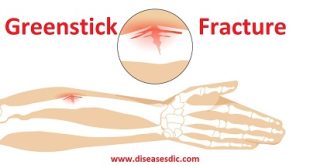
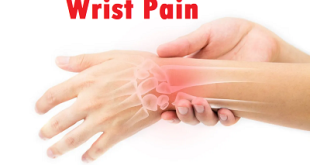
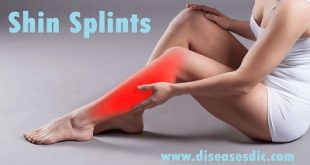
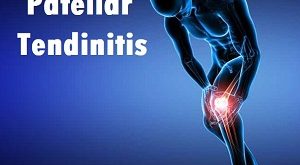
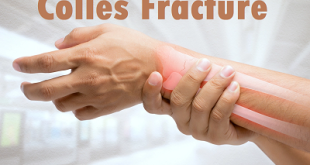
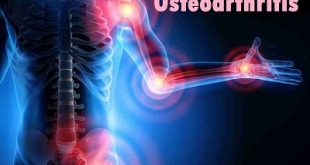

what are the drugs used for treatment of osteomalysis
Most common drugs are listed in the medications part please find it out in the post.
my son is turning six years this march 2019 how can I help the situation he has aricket at his back
please consult a doctor.